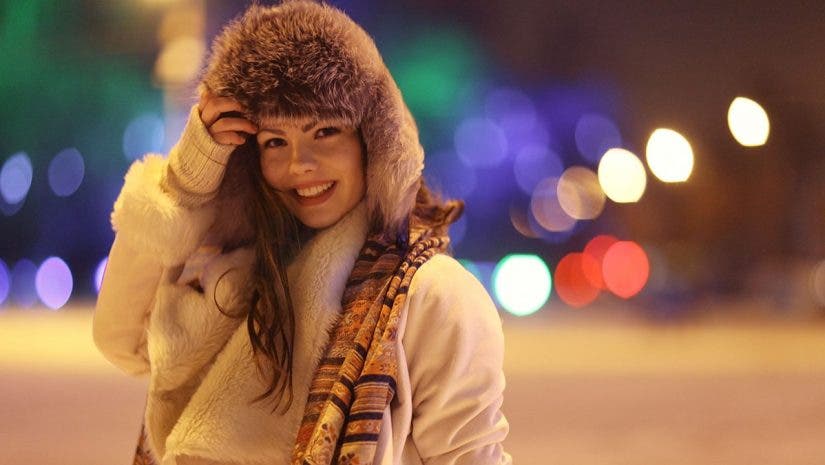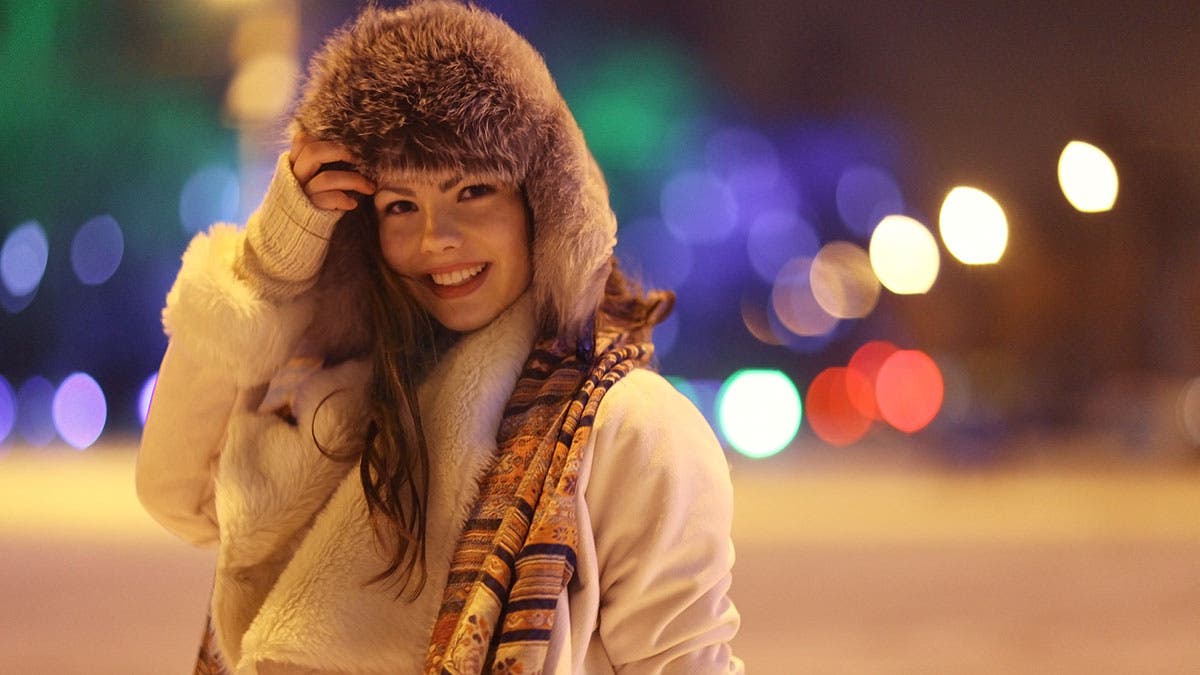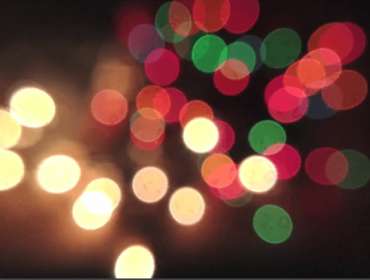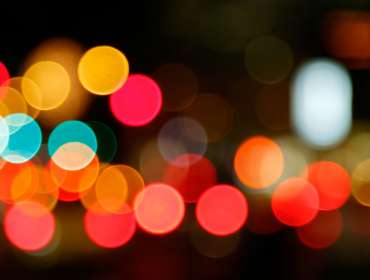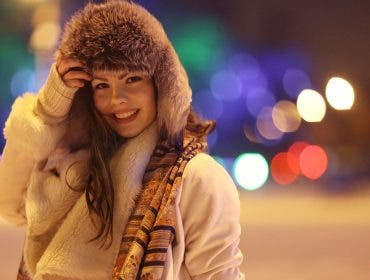Photographer Jay P. Morgan was in shooting in New York City’s Times Square and wanted to explore shooting bokeh with all the intense lights on Broadway. (The term “bokeh” is Japanese and means “blur” or “haze”.) In this article, Morgan demonstrates how different lenses and aperture settings can create the cinematic effect.You’ll see how the bokeh generated by a 200mm lens, compares to that of a 50mm lens.
Bokeh Tests
Before heading out to Times Square, Morgan first did some bokeh tests indoors, using Christmas lights in the blurred background.
With Christmas lights strung on a white wall, the image on the left was shot using a 50mm lens at f/2.8. The lens was 3 feet away from the subject, and the subject was 3.5 feet away from the background. As you can see, the lights are not very blurry.
The image on the right was shot with the same lens at the same distance, but with the aperture set at f/1.2. Notice how the wider aperture setting makes the background circles larger.
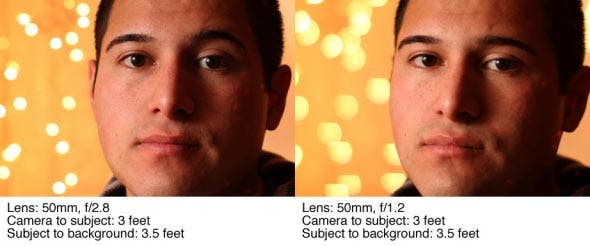
(Shop for lenses at Adorama.)
Still using the 50mm lens at f/2.8, Morgan and his subject moved away from the background about 4 feet. The lens was still 3 feet from the subject, but the subject was now 7 feet from the background. As you can with the image on the left, the blur increased as they moved away from the background.
The only difference with the image on the right was the aperture setting of f/1.2. A wider aperture results in larger bokeh circles.
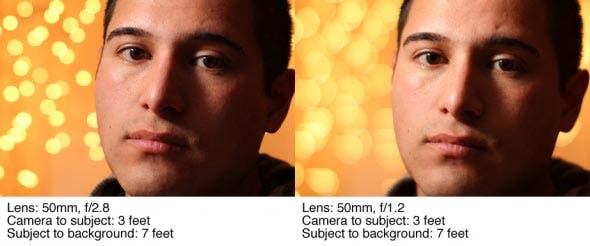
Focal length also plays a factor. The image on the left was shot with a 100mm lens, 8 feet away from the subject and 13 feet from the background.
The only difference with the image on the right was the lens choice: 200mm.
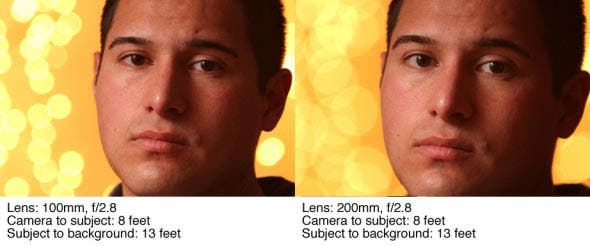
So, in order to render the best bokeh circles, you need to:
- Get as close to the subject as you can.
- Be as far away from the background lights as possible.
- Use a longer lens if possible.
- Use as wide of an aperture as possible.
Times Square
Morgan was now ready for Times Square to apply these principles on location. Jay’s model, Ying Ying, was a great talent that he secured from NY Casting.
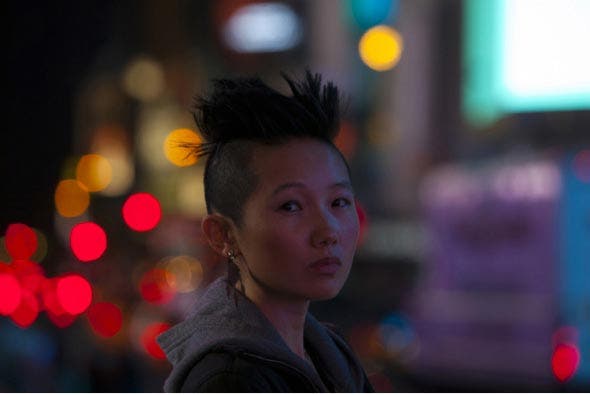
This image was taken only with ambient light coming from the surrounding billboards. Shooting in a location like Times Square is a challenge with respect to lighting, as the light from the billboards is constantly changing, both in color and intensity. It can, however, provide some very cool color effects. Exposure: f/4.5, 1/60 sec., ISO 320. Lens’ 200mm. Camera to subject: 10 feet.
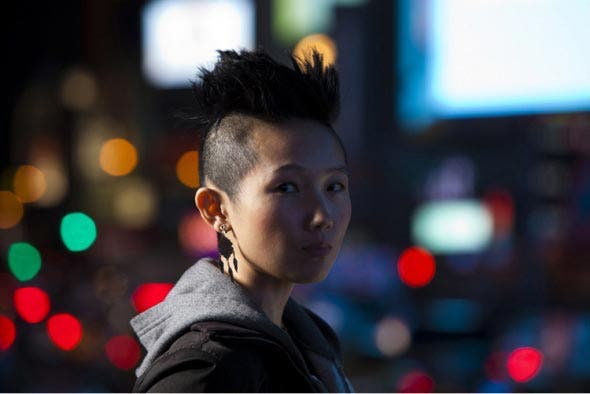
Here’s a shot with an added light: a Dynalite flash head with a Photoflex Small OctoDome and Grids coming in from the camera left side. As you can see, the face is still very dark but the bokeh looks great. The background lights are far away enough to create a good look. Exposure: f/4.5, 1/60 sec., ISO 320. Lens: 200mm. Camera to subject: 10 feet.
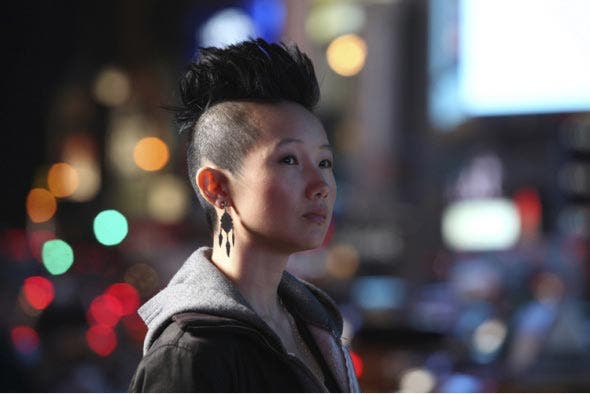
To lighten the shadows on Ying Ying’s face, Morgan added a Photoflex 42″ White/Translucent Reflector to the Photoflex Small OctoDome. He panned the key light camera-right to take the intensity off her head and move the center of the circle of coverage to the reflector. The back of her head was lit by the outside of the area of coverage and the reflector was lit by the center of the area of coverage, which was brighter. It needed this extra brightness to give enough bounce fill to balance the direct light on the back of her head. Exposure: f/4.5, 1/60 sec., ISO 3200. Lens: 200mm. Camera to subject: 10 feet.
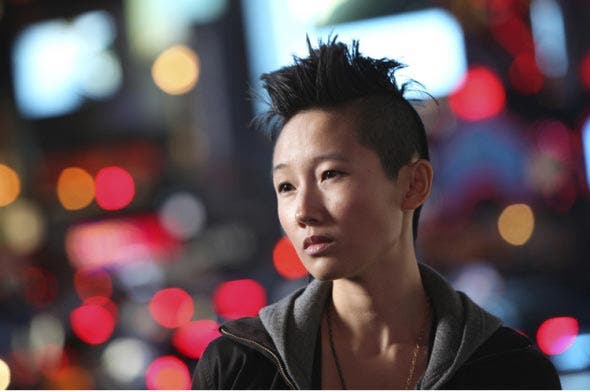
Here we see all the lights in place. This lighting setup allowed Ying Ying to turn her head for a nice Rembrandt light or to turn away and have a nice rim light. Exposure: f/4.5, 1/60 sec., ISO 3200. Lens: 200mm. Camera to Subject: 10 feet.
Shop for Camera Lenses at Adorama.
